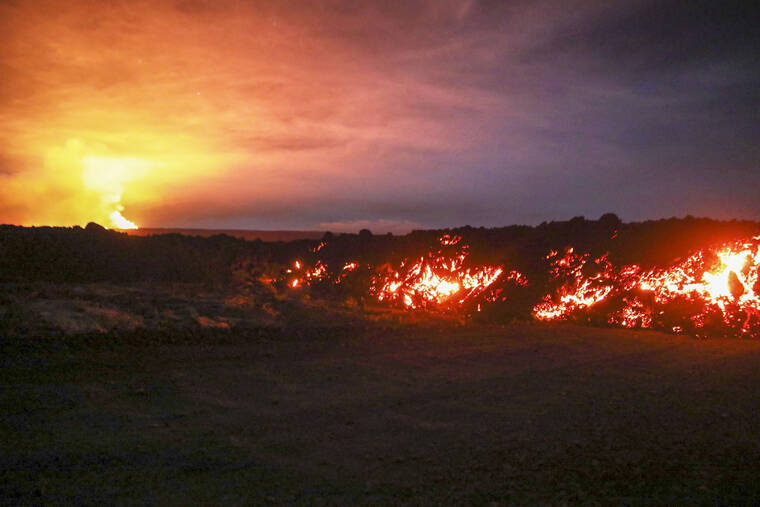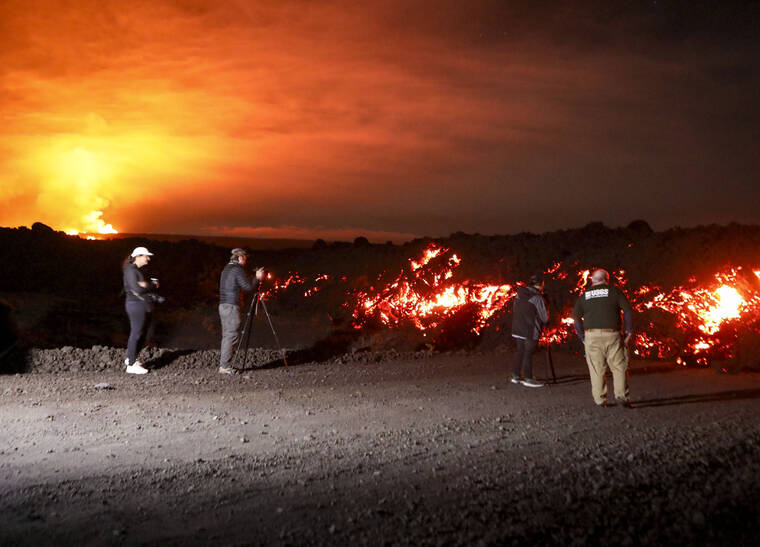HILO, Hawai‘i — More than one year after the eruption of its namesake volcano, the Mauna Loa Observatory remains high, dry and largely cut off from the rest of the island.
The atmospheric monitoring station was not directly damaged by the 13-day eruption of Mauna Loa that began Nov. 27, 2022, but the volcanic fissures that opened during the eruption spewed a river of lava across the Mauna Loa Observatory Access Road, the only access route to the National Oceanic and Atmospheric Administration (NOAA) facility.
With the road still buried under the cooled lava, access to the observatory is limited now to weekly visits by two to four staffers who travel there via helicopter, said Aidan Colton, outreach coordinator for the observatory.
“The weather tends to come in around noon up there,” Colton said. “There’s been times when we’ve had to clear out in a hurry, because it’s not safe to fly up there.”
Because the lava also severed power lines servicing the facility — about 60 power poles, Colton estimated — the observatory is operating at a greatly reduced capacity. Colton said that over the last year, staffers have been able to set up a photovoltaic system that has provided enough power for the facility to operate at about 33 percent effectiveness, but that has left significant gaps in its measurements.
Colton said the limited resources of the observatory are currently dedicated toward monitoring a few critical data points: solar depletion, ozone levels, ozone depletion rates, greenhouse gases and aerosols.
“We’re still collecting good data, but we would definitely like to do more,” Colton said.
The U.S. Department of Energy announced Monday that it will award NOAA $5 million to expand the photovoltaic system so that the observatory can once again run at 100 percent efficiency, with the added side effect of making it an entirely net-zero facility.
However, even though power is returning to the facility, cars won’t be anytime soon. Colton said about a mile of the access road is buried under lava, and the fissures from which that lava emerged also cross the road in some places — “and those fissures are pretty deep,” he added.
NOAA had initially received some federal funding last year to investigate the possibility of opening a temporary road across the lava, but due to a clerical error, that funding has been withdrawn and NOAA now needs to reapply.
Until then, Colton said, workers will continue to fly in every week when possible, and added the facility tended to have only two to four workers on-site at any given time even before the eruption.
“It’s not ideal, but we were able to get back to work within a month,” Colton said. “At least we’ve been able to restart operations without difficulties.”
•••
Email reporter Michael Brestovansky at mbrestovansky@hawaiitribune-herald.com.






